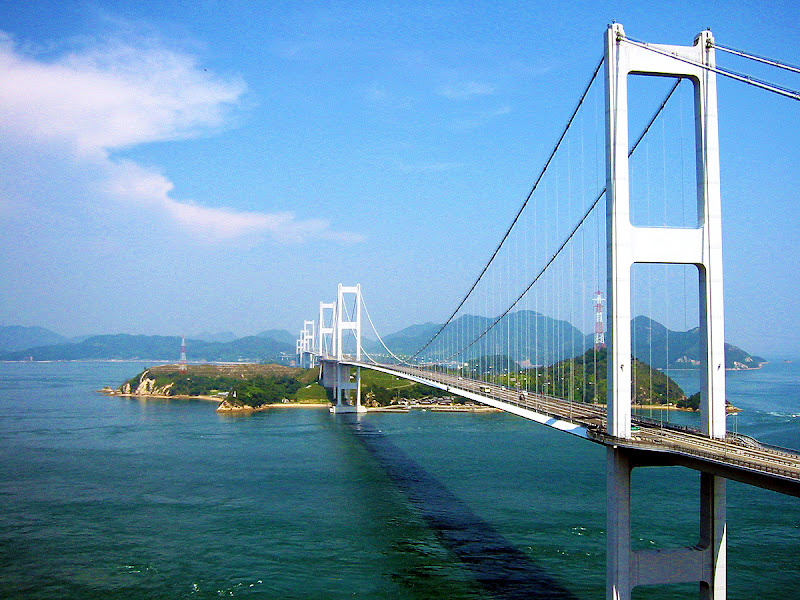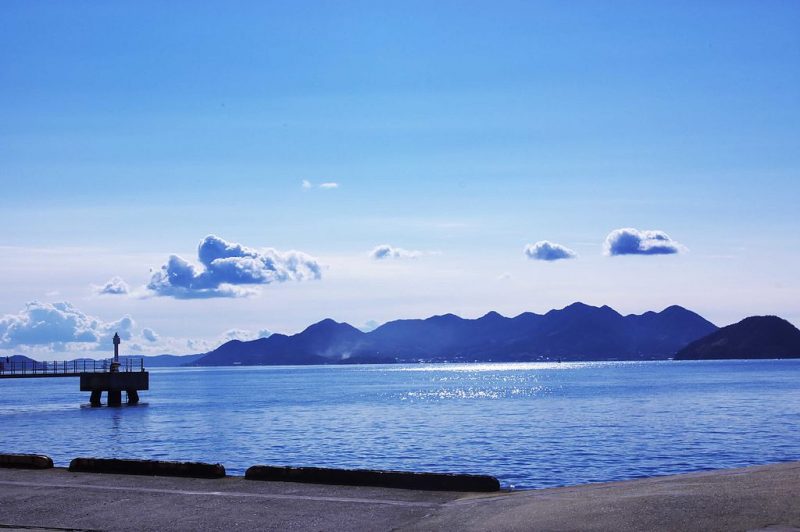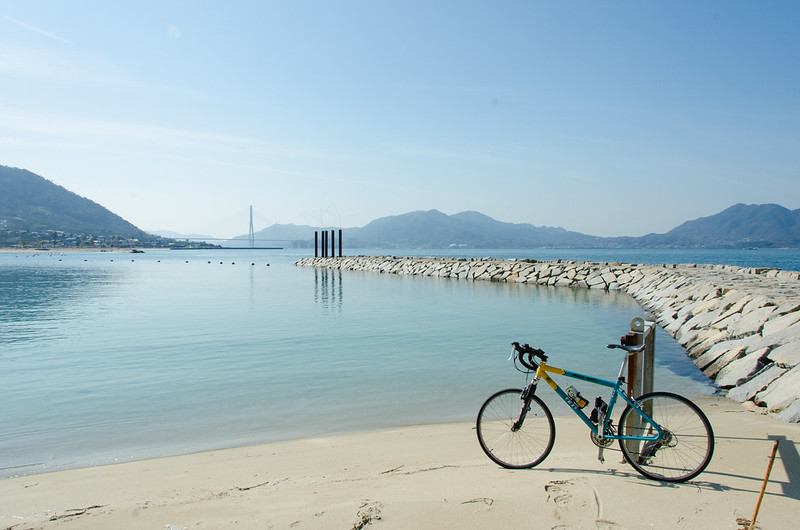Jan 29, 2021
Explore the Fantastic Cycling Routes of Hiroshima
Surrounded by water and a paucity of mountains, you wouldn’t necessarily pick Hiroshima for a world-class cycling destination. However, bicycle enthusiasts worldwide come to the area to enjoy the many fantastic cycling routes. Yes, you may not be hitting the climbs of the Alps, they may not have the twists and turns of the Pyrenees, and there may not be the bone-shuddering cobbles of Flanders, but what these routes do have is a spectacular beauty, amazing seafood, and for the most part the safety afforded by designated bicycle lanes.
Whether you like pottering about on your mamachari, want to challenge yourself to get well into double figures, or are an experienced Gran Fondo rider, there is something for everyone in the rides around Hiroshima. So, what are you waiting for? Pop on some comfortable clothes/cycling shorts/skinsuit (delete as appropriate) and get on your bike!
Shimanami Kaido
The Shiminami Kaido trail is the best known of Hiroshima’s cycling routes, with good reason. It consists of the world’s second-longest chain of suspension bridges spanning the Seto Inland Sea, connecting six islands between Imabari in Shikoku and Onomichi in Hiroshima-ken.
The islands along the 70km trail are beautiful, and intermediate cyclists can cover the route in one day. If you want to take in the sights, unless you are an extreme cyclist, it is a good idea to give yourself a couple of days. There are plenty of hotels and ryokans, with all budgets catered for: from minshuku to top class accommodation in spa hotels.

For dramatic views of the islands’ lush green beauty, viewpoints can be found at Hirakiyama on Hakatajima, Shiratakisan on Innoshima, and the Kurushima Kaiko observation deck, as well as scenery and beaches aplenty there are many temples and shrines to explore.
Onomichi is perhaps the easiest place to begin as it avoids the challenge of getting to Imabari from Hiroshima, and most of the islands have ferry ports from where you can make your way back to Onomichi should your legs tire.
Where: 1-1 Higashigoshocho, Onomichi, Hiroshima (map)
Bicycle rental: Onomichi station is 150m from the port, where you can pick up a bike from 7 am. From there, depart regular ferries to Mukaishima. Bicycle rental stores can be found on each of the islands costing between 500 JPY and 1,000 JPY a day. You can drop your bike at any of the fourteen locations en route, though you may only reclaim your ¥1000 deposit should you return your bicycle to the terminal from which it was hired.
Etajima Island
Also called Nomi-Jima, Etajima Island is flanked by oyster rafts, crystal clear water, and beaches where a beachcomber may find all kinds of debris. With mikan [tangerine] and olive groves punctuating the route, and beautiful views afforded from all areas of the island, it makes for a beautiful day of casual cycling. If you are worried about getting lost, follow the (intermittent) blue cycle paths or pick up a cycling map from Ujina Ferry Port.

If you wish to see a bit of history, the island was once home to the former Imperial Japanese Naval Academy (circa 1888). The academy still retains many of its original features. Nearby stands a white western-style villa, ‘Kaiyusha,’ built at the end of the Meiji period as a meeting place for lower-ranking officers and sailors. It has been maintained so well that its brick foundations, the weatherboard walls, the sash windows, and even the distorted glass are all original and are practically unchanged.
In fact, evidence of the island’s historical use is dotted all around the island, and should you wish to stay that long, the sunset from Hodaiyama, the site of an old gun battery, is particularly breathtaking.
Where: 1 Chome-1-19 Etajimacho Kirikushi, Etajima, Hiroshima (map)
Bicycle rental: A variety of bikes are available for rent at Etajima’s ports and the Furusato Kouryukan Cycle Station near the Former Imperial Naval Academy between 9 pm and 4 pm. Bicycles will cost you a 1000 JPY deposit, plus 500 JPY for the rental (1,000 JPY for an electric power-assist bike). You may return your bike to any rental cycle point, but you will forfeit the deposit unless you do so to the original rental location.
Tobishima Kaido
If you want to enjoy the island-hopping experience but want to stay away from the crowds, then the Tobishima Kaido – also known as ‘the other kaido’ – is the place for you. Like the Shimanami Kaido, it is a 70-kilometer route that crosses the sea by way of seven islands connected by bridges from Nigata (near Kure) to Okamura island in Shikoku.

The majority of the route, 46 kilometers to be precise, traverses the Aki Nada Islands via seven bridges. While these are not quite as dramatic as along the Shimanami Kaido, there is still some absolutely stunning coastal scenery and seascapes along the way.
There are many beautiful stops as you pass through the islands, including the parks, beaches, and tourist sites of Shimokamagari, where feudal lords on their way to Edo would often stay; Kenmin no Hama, a resort area on Kamikamagari Island with golden beaches that are generally considered to be the best in all of Hiroshima Prefecture; and the old port town of Mitarai in the southeast corner of Toyoshima Island.
Where: 1 Takaramachi, Kure, Hiroshima (map)
Bicycle rental: There is a relatively new bicycle rental service (previously you had to use your own bike) provided by Camp & Cottage Kajigahama. Reservations need to be made in advance, but you can rent or drop off bicycles at various locations, the closest to Hiroshima being Nigata Station. Three-hour rentals cost 1,000 JPY, and an eight-hour rental comes in at 2,000 JPY. There is a further charge for returning your bicycle to a different location.
Image: By cotaro70s via flickr.com [CC BY 2.0]
Image: Hiroaki Kaneko / CC BY-SA
Image: 柳田亮 / CC BY-SA
Image: By Kzaral via flickr.com [CC BY 2.0]


About the author